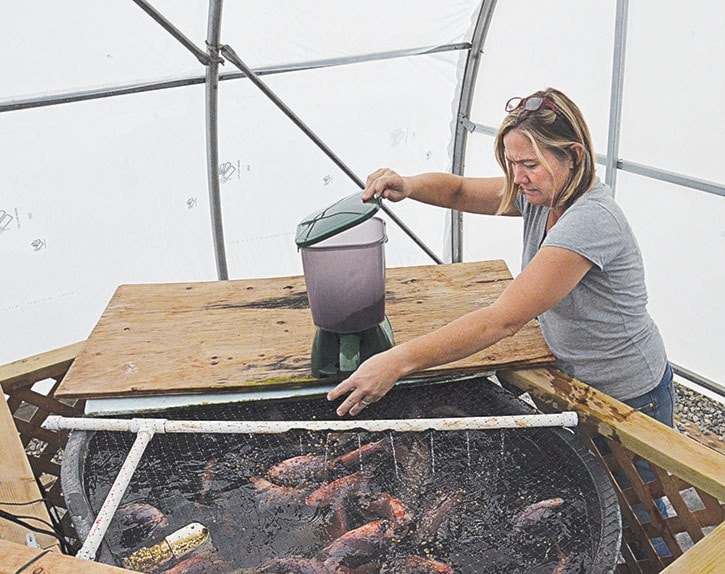In a greenhouse at Kwantlen Polytechnic University’s Langley campus, fish and plants share a small, looping ecosystem.
A series of tanks and tubes are an example of aquaponics, a type of farming that mixes growing crops with fish farming.
One one side of the system is a jacuzzi-sized tank of water full of fat-bodied orange tilapia.
The fish are fed, and the water from their tank circulates through a large box full of rounded clay balls, in which some leafy greens grow.
From there, it flows down into another tank, where heads of lettuce float, suspended in a foam raft. Their roots float in the water, and there is no soil in the system.
The end result is an almost closed-loop system, said instructional association Shelley Murley.
The water recirculates, and the wastes created by the fish are used by the plants as fertilizers. The plants keep the water clean for the fish. The only thing that goes in after the system is set up is fish food.
For a system about the length of a pickup truck, it creates 67 heads of lettuce every 21 days and a tank of tilapia.
Students at KPU have been working with one aquaponics system since it was first assembled 10 months ago, and the students in the urban agriculture course will construct another one this month, said Gary Jones, instructor and co-chair of the school of horticulture.
Urban agriculture is a broad and growing field.
“Basically, it’s producing food, crops, or fibre – any agricultural product – within an urban setting,” said Jones.
That could mean backyard farms, or green roofs, or even high-tech vertical farming.
Aquaponics is often thought of as part of the vertical farming movement – it’s about generating a lot of produce in a small area, without any soil.
“A lot of people think it’s really high tech,” said Jones.
But the systems are relatively simple, and allow the students to operate and build their own.
“It takes some of the mystique out of it,” he said.
The construction also teaches skills ranging from teamwork to working with hand tools.
Jones is looking into using a different type of fish for the second system, replacing tilapia with trout. The special requirements for raising trout may make that difficult, but he’s hoping to compare to systems.
Murley said that right now, staff and students are working on understanding the systems and their requirements. Eventually, they’ll most likely look at whether aquaponics systems like these can be operated economically.
“Economics is huge,” said Murley.
The systems are relatively small, she noted, small enough that they can be installed in a backyard.
